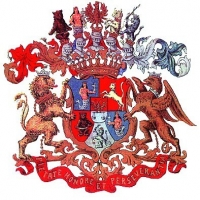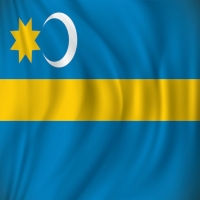![]() Published in Hungary - Political debates and analysis - 22 Dec 2022 02:42 - 5
Published in Hungary - Political debates and analysis - 22 Dec 2022 02:42 - 5
Amikor Magyar huszárok vonultak Bukarest utcáin.
Romania was in a very unfavourable strategic position, facing enemies along its long southern border with Bulgaria. In the Treaty of Bucharest, signed on 17 August 1916, the Entente powers and Italy ured the Romanian army of Russian istance, in addition to the well-known territorial promises, and planned to tie up Bulgaria with an attack from Saloniki. With this seemingly secure backdrop, the country, which had been independent for barely 38 years, entered the war.
A total of 370,000 Romanian soldiers of the 1st, 2nd and 4th Romanian armies broke through the defences of the Carpathians on 28 August; the Monarchy seemed no longer able to withstand the pressure from the new hemisphere. However, its allies, tied up on several fronts, came to its aid immediately: in August, German, Bulgarian and Turkish war messages arrived in the Romanian capital and within days a full coalition force (even the Turkish leadership sent two divisions by sea) was waiting to launch a counter-attack.
On the Transylvanian side, the Austro-Hungarian 1st Army and the German 9th Army faced the three Romanian armies already mentioned, while to the south, General August von Mackensen's German-Bulgarian-Turkish Danube Army and the Bulgarian 3rd Army were opposed only by the Romanian 3rd Army. The plan to encircle the Romanian forces was prepared by Paul von Hindenburg himself. On 2 September, the Danube Army of 70,000 men broke through the Romanian defences, followed on 16 September by the Bavarian Alpenkorps attack in Transylvania, with the Imperial and Royal 2nd Mountain Brigade. The Romanian forces were caught between two fires: half of the army spent a month and a half travelling between the two theatres of operations until Bucharest was taken.
Mackenzie was isted by a fleet of Austrian and Hungarian monitors sailing up the Danube to Dobruja, which helped him to capture Constanța by 23 September. Less than two months after the Romanian attack, the military situation took a shocking turn for Romania. Transylvania was liberated by the German and Austro-Hungarian forces on 25 October, and the next day Romania was cut off from the sea, opening the way for the central powers to the Romanian Lowlands and Bucharest.
Bucharest, already mourning the loss of 4,000 souls to Zeppelin bombing, was to be spared the siege by the government, which prepared to turn the tide of fighting with a powerful final ault along the Argeș River by the end of November. French Allied liaison Philippe Berthelot wanted to destroy the Danube army with a counter-attack similar to the Marne. The mive ault almost crushed Mackensen's army, but a flank attack by Erich von Falkenhayn (the German chief of staff before Hindenburg's appointment) and a Turkish division forced the Romanian army to retreat by 5 December.
After the Battle of the Argeș, the fate of Bucharest was decided. Mackensen's Danube Army opened the way to the Romanian capital. However, the German command was unaware of the decision to surrender Bucharest, despite many indications to the contrary, and Mackensen put three divisions and a large amount of ammunition on standby, together with heavy artillery. The commander, who left nothing to chance, sent a message to the commander of Bucharest on 5 December. Neither the Romanian field army nor the Russian troops there will prevent it... We have long-range guns at our disposal for firing at the fortress itself. In order to spare the Romanian capital and its inhabitants... I call upon Your Excellency to surrender the garrison and the city unconditionally". The people of Bucharest were relieved to be free of the horrors of four months of war. In his memoirs, Lajos Szádeczky-Kardoss, a university lecturer from Cluj-Napoca sent to Bucharest, explains the phenomenon as follows. And the psychology of this idle people is wonderful. Now they are having a good laugh as they perform in the spacious arena of the Amicii Orbilor an amusing parody of the bombing of Bucharest."
Bucharest was occupied by four armies after 6 December 1916. The occupying forces included troops from all the Central Powers, with German, Bulgarian, Turkish, Austrian and Hungarian units. Bucharest continued to go about its daily life, and the German commander of the city was not subsequently reported to have suffered any major atrocities during the occupation - the central powers dismantled the city's fortifications in any case.
-------------------------------------------------------------------------------------------------------------------
Az 1., 2. és 4. román hadsereg összesen 370 ezer román katonája törte át a Kárpátok védelmét augusztus 28-án; úgy tűnt, a Monarchia már nem bírja ki az újabb égtáj felől érkező nyomást. Számos fronton lekötött szövetségesei azonban mindjárt a segítségére siettek: még augusztusban német, bolgár és török hadüzenet érkezett a román fővárosba és néhány napon belül teljes koalíciós haderő (még a török vezetés is küldött két hadosztályt tengeren keresztül) várta az ellentámadás megindítását.
Erdély felől az 1. osztrák-magyar és a 9. német hadsereg állt szemben a már említett három román hadsereggel, míg délen August von Mackensen tábornok német-bolgár-török Duna-hadseregével és a bolgár 3. hadsereggel szemben csak a 3. román hadsereg állt. A román erők bekerítésének a tervét maga Paul von Hindenburg készítette elő. Szeptember 2-án a 70 ezer főt számláló Duna-hadsereg törte át a román védelmet, amit 16-án követett a bajor Alpenkorps támadása Erdélyben, a cs. és kir. 2. hegyidandárral kiegészülve. A román erők két tűz közé kerültek: a hadsereg fele Bukarest elfoglalásáig másfél hónapot töltött a két hadszíntér közötti utazással.
Mackensent segítette a Dunán egészen Dobrudzsáig hajózó osztrák és magyar monitorflotta, melynek köszönhetően szeptember 23-ra elfoglalta Constanțát. Alig két hónappal a román támadás után a hadi helyzet sokkoló fordulatot vett Románia szemszögéből. Erdélyt október 25-ére szabadították fel a német és osztrák-magyar erők, másnapra pedig Romániát elvágták a tengertől, megnyitva az utat a központi hatalmak előtt a Román-alföld és Bukarest felé.
A Zeppelin-bombázásoktól már így is 4 ezer lelket sirató Bukarestet a kormány meg akarta kímélni az ostromtól, így november végére az Argeș folyó mentén készültek egy erőteljes végső támadással megfordítani a harcok menetét. A francia Philippe Berthelot szövetségi összekötő egy, a marne-ihoz hasonló ellentámadással akarta a Duna-hadsereget megsemmisíteni. A mzív roham majdnem összeroppantotta Mackensen hadseregét, de Erich von Falkenhayn (a német vezérkari főnök Hindenburg kinevezése előtt) és egy török hadosztály szárnytámadása visszavonulásra késztette a román hadsereget december 5-re.
Az Argeș menti csatát követően Bukarest sorsa eldőlt. Mackensen Duna-hadserege előtt megnyílt az út a román főváros felé. A német hadvezetés azonban nem tudott a döntéséről, hogy katonailag feladják Bukarestet, annak ellenére, hogy sok jel erre utalt, így Mackensen három hadosztályt és tetemes mennyiségű lőszert helyezett készenlétbe a nehéztüzérséggel együtt. A véletlenre semmit sem bízó parancsnok december 5-én üzenetet küldött Bukarest parancsnokának: „A központi hatalmak csapatai Bukarest megtámadására készülnek. Ebben sem a román tábori hadsereg, sem az ott lévő orosz kötelékek nem fogják megakadályozni… Magának a várnak a lövetésére messzehordó ágyúk állnak rendelkezésünkre. Hogy a román fővárost és annak lakóit… megkíméljük… felszólítom Nagyméltóságodat, hogy a helyőrséget és a várost feltétel nélkül adja át”. A bukarestiek fellélegeztek, hogy megszabadultak a négy hónapja tartó háború borzalmaitól. Szádeczky-Kardoss Lajos, Bukarestbe küldött kolozsvári egyetemi oktató visszaemlékezéseiben így magyarázza a jelenséget: „A lakosság, mint egy nehéz álomra, úgy gondol vissza a rémes napokra és éjszakákra. És csodálatos ennek a léha népnek a lélektana. Most jóízűen mulat rajta, amint az Amicii Orbilor tágas arénájában előadják Bukarest bombázásának mulatságos paródiáját.”
Bukarest 1916. december 6. után négy hadsereg megszállása alá került. A megszálló erőkben a központi hatalmak minden állama képviseltette magát német, bolgár, török, osztrák és magyar alakulatokkal. Bukarest élte tovább mindennapjait, a város német parancsnokának a későbbiekben sem jelentettek komolyabb atrocitásokat az okkupáció alatt – a központi hatalmak mindenesetre leszerelték a város erődgyűrűjét.
Support
Gottfried BouillonGottfried BouillonGottfried Bouillony0sunaDandelion MesterDandelion MesterComments (5)


There s a player in this game who I take for air and I don t react to his stupidity, because I ve already told him I don t talk to idiots! 

Igen, próbálom őket maximálisan szórakoztatni! 

Bozgor alert

Mr Bogdán mondhatsz bármit, akkor is tény, hogy Bukarest pincsi kutya volt 1916-ban.. 


